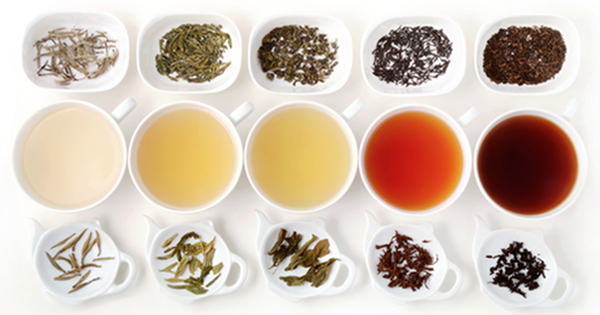Classes of Tea

All different classes of tea come from the same general plant, the Camellia Sinensis plant. The difference between tea classification occurs from geography, growing conditions, and processing. Native to Asia, the Camellia Sinensis plant, is presently cultivated worldwide in numerous tropical and subtropical regions. There are more than three thousand varieties of tea available making it the second most consumed beverage in the entire world, after water of course. There are six basic tea classifications: black, dark, oolong, green, white, and puer.
Black teas - are permitted to wither which induces a process known as oxidation. When oxidation occurs water will evaporate from the leaf allowing the leaf to take in more oxygen from the air around it. Black teas typically experience full oxidation resulting in dark brown or black leaves. If black teas are brewed appropriately they will produce a more pronounced and robust flavoring along with a high caffeine content. When compared to other teas, the black teas caffeine content is fifty to sixty percent higher.
Dark Teas - are indigenous to the provinces of Sichuan and Hunan located in China. They are highly flavorful with probiotic benefits. When steeped the tea tastes smooth with a natural sweetness.
Oolong teas - otherwise known as Wulong tea will experience partial oxidation. The Oolong tea caffeine content lies somewhere between that of black and green tea. Additionally, its flavor is less robust than black teas but not as subtle green teas, giving the tea its own unique tone. Oolong teas can be so fragrant that their amora is often compared to that of fresh fruit or flowers.
Green Teas - are permitted to slightly wither once picked. The green tea leaves are heated rapidly in order to stop the oxidation process. Thus, the tea is brewed at a low temperature for a shorter amount of time allowing the green teas to contain less caffeine. The classification of green tea typically tends to result in a more subtly flavored tea with several accents and undertones coveted by many connoisseurs.
White Teas - are considered the most dainty and delicate of all tea classifications. Tea lovers appreciate white teas for their natural sweetness, complexity, and subtlety. White teas are processed by hand utilizing the youngest shoots of the Camellia Sinensis plant and experiences no oxidation. If the tea is correctly brewed, at an extremely low temperature and steep for only a short amount of time it will only contain a trace amount of caffeine. However, if the tea is steeped for a longer amount of time at a hotter temperature than you will be able to extract a higher content of caffeine. Technically, white teas do not contain less caffeine than other classifications of tea.
Puer teas - are aged black teas derived from China. This tea is most coveted for its earthy flavor and medicinal properties. Puer teas are the most mysterious of all tea classifications. Before the year of 1995, the importation of Puer tea was illegal within the United States. Additionally, its brewing process and production is a safe guarded secret within China. Puer teas are rich in flavor and very strong. The best element of a Puer tea could be that it contains no bitterness while maintaining its deep flavoring.
